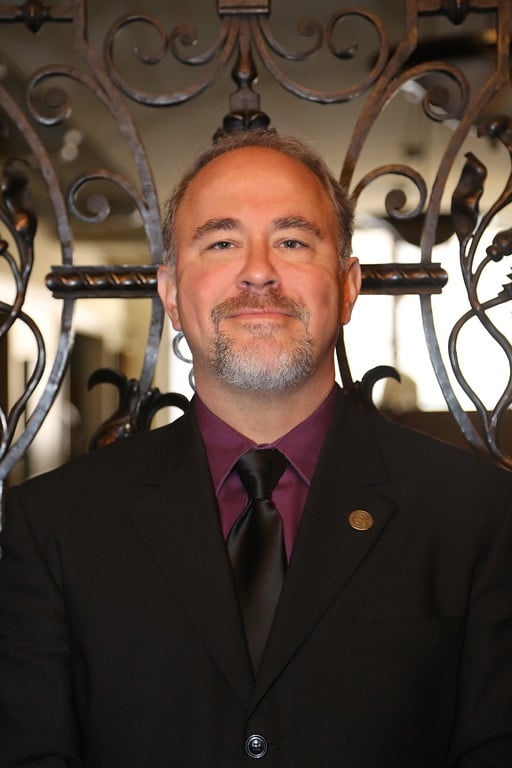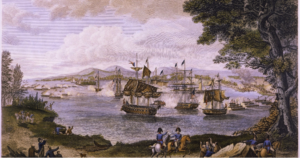“He was not a very tall man”: words I read in a message associated with my great-great-great-grandfather Henry Poor of Newburyport, Massachusetts. Henry was born in Newbury on 20 June 1769, a son of Captain Jonathan and Sarah (Dole) Poor. His father led a company of the 2nd Essex Regiment on the Alarm of 19 April 1775 and served at various times during the war. I often wondered what young Henry knew about his father’s service that was lost in our family traditions. I was also puzzled by the words “He was not a very tall man” when I responded to the compiler on Ancestry.com about my ancestor. It turns out she was another one of Henry’s descendants via the younger half-sister of my great-great-grandfather Alexander Livingstone Poor (1812-1884). I wondered how she came to know how tall Henry was, since no photograph or image existed of him to make such a determination. Her answer surprised me, as I have spent over forty years researching my genealogy and specialize in military research. She told me that Henry’s height was listed as 5’4” when he enlisted in 1814 as a soldier during the War of 1812.
What initially surprised me was that I knew I would have searched for him in the published volume of the Records of the Massachusetts Volunteer Militia (Boston: Wright & Potter, 1913). Furthermore, I was intrigued that a forty-four-year-old man with a young family would have enlisted at his age. When I lecture on military records, I always stress the extreme age ranges of soldiers when they enlist. However, this time I failed to follow my own research advice! The record of his service was not with the Massachusetts State Militia but with the United States Army Light Artillery. Henry enlisted 15 February 1814 at Newburyport (the record states January 15 or February 15), according to the online document from the database “U.S., Army, Register of Enlistments, 1798-1914” on Ancestry.com.
Besides now learning his height, I learned that he had grey hair and eyes and a fair complexion. Without a painting or photograph these descriptive facts would have been lost if he had not enlisted. The unit in which he served was under the command of Captain Francis Stribling. Henry’s military rank was that of an artificer. An artificer in the Light Artillery would assist with loading the cannons as well as repairing them. Henry was a carpenter and a cabinetmaker in civilian life. Were these skills put to use to repair the cannon carriages in battle? Henry was active in his unit when they participated in the Battle of Plattsburgh, also known as the Battle of Lake Champlain, 6-11 September 1814. This battle was the final British invasion of the northern region of the United States.
Besides now learning his height, I learned that he had grey hair and eyes and a fair complexion.
Henry was discharged at the expiration of his enlistment on June 1815 at Plattsburgh, New York. He applied in January 1818 for a bounty land warrant under the Scrip Warrant Act of 1812. This warrant granted him 160 acres in what is now Augusta in Hancock County, Illinois. Henry’s first wife Abigail Johnson Huse, from whom I descend, died in Newburyport in 1821, aged 49. Henry moved from Newburyport to Boston soon after the birth of his youngest child with his second wife, the widow Martha (Loring) Harrington, in 1824. Henry and Martha remained in Boston the rest of their lives and never settled in Illinois; he sold his 160-acre lot in Illinois on 31 October 1839 to Horace Mead. Henry Poor died at his brick row house – which still stands on Church Street in Boston’s Bay Village neighborhood – on 28 April 1853. He was buried at the family plot at Mount Auburn Cemetery in Cambridge, Massachusetts. His children obviously knew of his military service, and perhaps even some of his grandchildren did as well. However, my grandmother (his great-granddaughter) never spoke of him. Her own father was only four years old when his grandfather Henry died, and it may have been at that point the story was lost in my direct line.
There is still much for me to learn, and I await a chance to explore records in the National Archives in Washington, D.C. It is an honor to be one of the living descendants of a man who did not think he was too old to serve his country when the liberty his father fought for during the Revolutionary War was being challenged during the War of 1812.
I close with the news that Henry’s gravestone will be marked by a flag for the first time this coming Memorial Day weekend. This will be done by his great-great-great-grandson, who recently became a life member of the Massachusetts Chapter of the General Society of the War of 1812, the first to represent him – and hopefully not the last to remember him or his sacrifice.
Share this:

About David Allen Lambert
David Lambert has been on the staff of NEHGS since 1993 and is the organization’s Chief Genealogist. David is an internationally recognized speaker on the topics of genealogy and history. His genealogical expertise includes New England and Atlantic Canadian records of the 17th through 21st century; military records; DNA research; and Native American and African American genealogical research in New England. Lambert has published many articles in the New England Historical and Genealogical Register, the New Hampshire Genealogical Record, Rhode Island Roots, The Mayflower Descendant, and American Ancestors magazine. He has also published A Guide to Massachusetts Cemeteries (NEHGS, 2009). David is an elected Fellow of the Massachusetts Historical Society in Boston, Mass., and a life member of the New Hampshire Society of the Cincinnati. He is also the tribal genealogist for the Massachuset-Punkapoag Indians of Massachusetts.View all posts by David Allen Lambert →
